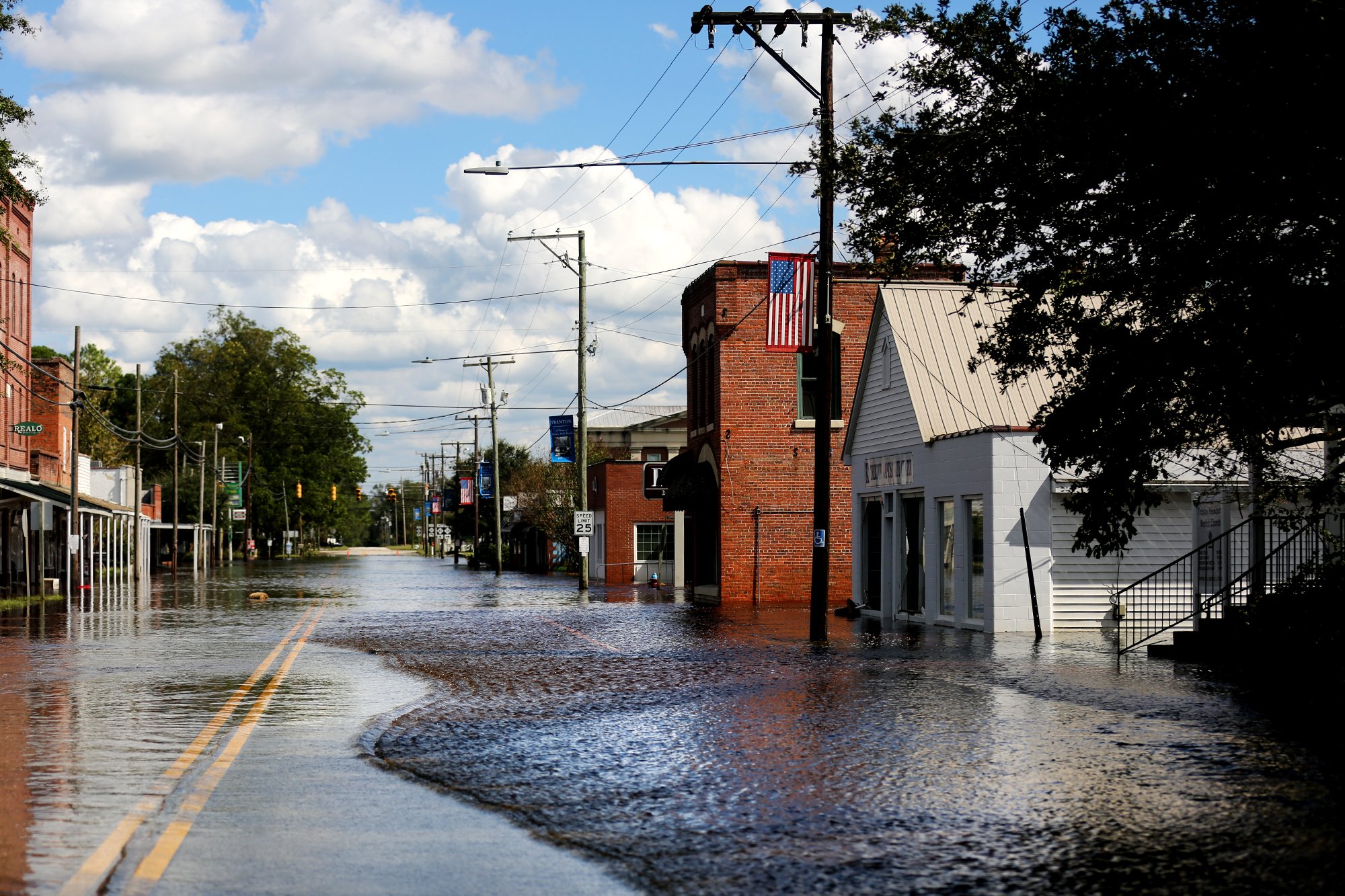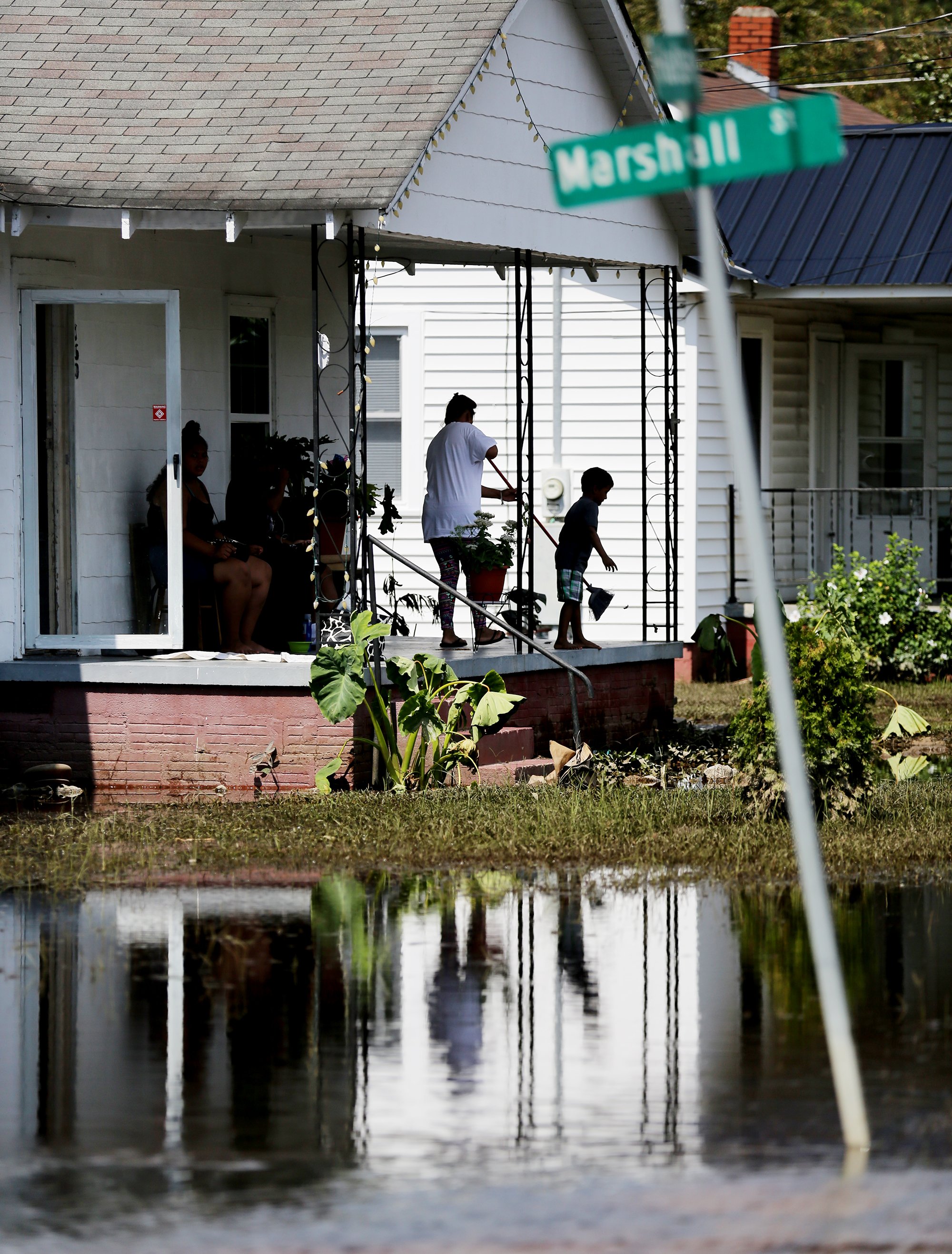Hurricanes deliver devastating blows to towns hollowed out by relentless storms
The main street of Fair Bluff remains under water, Monday, September 24, 2018, over a week after Hurricane Florence, made landfall in North Carolina. The town was wiped out just two years ago with Hurricane Matthew, many are wondering if this will be it for the town of Fair Bluff. (Dispatch photo by Courtney Hergesheimer)
Theodore Decker and Courtney Hergesheimer were among a number of GateHouse Media journalists who deployed to North Carolina in September to help journalists in sister newsrooms there cover the aftermath of Hurricane Florence. While there, they explored the larger story of the devastating cumulative effects of storm after storm hitting the same communities.
FAIR BLUFF, N.C. — Upriver in Lumberton, the floodwaters clawed through a hastily constructed mountain of sandbags and gravel. Just as it did during Hurricane Matthew two years earlier, the water poured into the city's western end with fury enough to float cars and swallow homes to their eaves.
Farther south, a wastewater-treatment plant outside Fairmont failed, and half a million gallons of sewage spilled into the Lumber River basin.
Here in Fair Bluff, more than a week after Hurricane Florence had made landfall about 75 miles to the east on Sept. 14, a seething stew of logs and lawn chairs, snakes and gators, half a million gallons of sewage and who knows how many millions of gallons of water surged through town.
In the aftermath, there was a dire quiet. If Hurricane Matthew left Fair Bluff on the ropes in 2016, Florence might have supplied the knockout punch.
Retirees Laura and Archie Carmichael stood at water's edge looking at the submerged, tiny heart of Fair Bluff and a mural painted on a building wall.
In the painting, the water and sky are bright and blue and full of promise. And it shows that even on the best of days, the Lumber River's water is stained brown, like tea.
Laura Carmichael grew up here and mourns the losses she has seen.
"Man, this place was booming," her husband recalled.
That was a long time ago.
After Matthew, Laura Carmichael said, "I walked the streets crying."
Looking at Fair Bluff after Florence, her manner was funereal.
"Sad," she said. "It's the death of a town, somebody said."
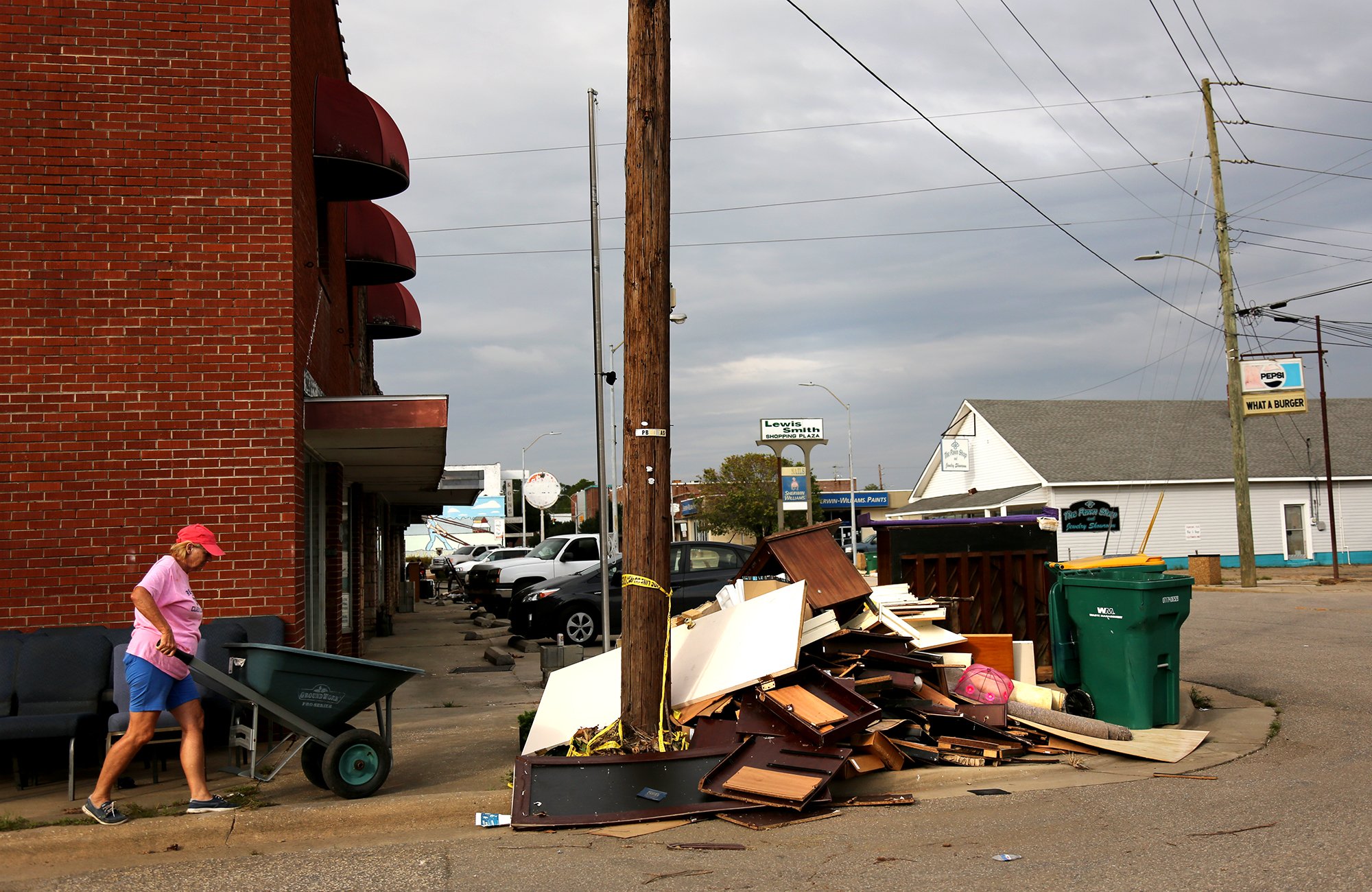
Slow-motion disaster
Can a hurricane kill a community? It's a question the residents of Mexico Beach, Florida, are probably asking after Hurricane Michael roared ashore there on Oct. 10, obliterating a city just a little larger than Fair Bluff.
It's too soon to say whether Hurricane Florence will spell the end of Fair Bluff, or any of the other communities battered by September's epic flooding in the eastern third of North Carolina. But after back-to-back catastrophes — Matthew in 2016 and now Florence — residents of eastern North Carolina fear that those who can afford to flee flood-prone towns will move away, leaving their poorer neighbors behind and their communities with dwindling resources that are essential to recovery.
Survivors of past storms — particularly Matthew and Floyd in 1999 — know it can take years for communities to bounce back and residents to return.
When it comes to natural disasters, slow-motion recovery is not unique to North Carolina.
Thirteen years after Hurricane Katrina caused catastrophic flooding in New Orleans, the population of the hard-hit Lower Ninth Ward is less than half of what it was before the storm, according to The Data Center, an independent organization that analyzes data on issues important to the people of southeast Louisiana. What once was a densely populated urban neighborhood is pocked with weedy lots and vacant homes.
Population loss also is predicted in Puerto Rico after back-to-back hurricanes last fall. Centro, the Center for Puerto Rican Studies at the City University of New York's Hunter College, estimated that through 2019, Puerto Rico could lose nearly 500,000 residents because of the damage wrought by Irma and Maria. That's equal to the number of people the island lost in the prior decade of economic stagnation, the center said.
Evidence mounts, meanwhile, that natural disasters exact a bigger toll on the people who can least afford it. While those with flood insurance rebuild and those with the means to move do, the poorest residents often stay put.
"Their lives are dealing with emergencies, and here's another one," said Heather Hunt, a researcher with the University of North Carolina School of Law and the North Carolina Poverty Research Fund. "All of it comes to the fore when something like a natural disaster hits, which is just another form of an emergency."
Katrina highlighted this disparity in New Orleans. The Brookings Institution, a public-policy organization based in Washington, D.C., found that 38 of the 47 extreme-poverty census tracts in New Orleans were flooded to some extent during the storm.
In a groundbreaking report released this spring by the Federal Emergency Management Agency, researchers found that low-income homeowners are disproportionately likely to live in flood-prone areas. Of the homeowners in North Carolina flood zones, those who have flood insurance have a median income of $73,051, while those without it have a median income of $34,404. For poorer residents of flood zones, flood insurance may be just another necessity they do without.
In North Carolina's poorer communities, doing without is day to day.
"It's a sense of, 'We do this all the time,' and that's because it's another crisis in a life that's probably been filled with crises," Hunt said.
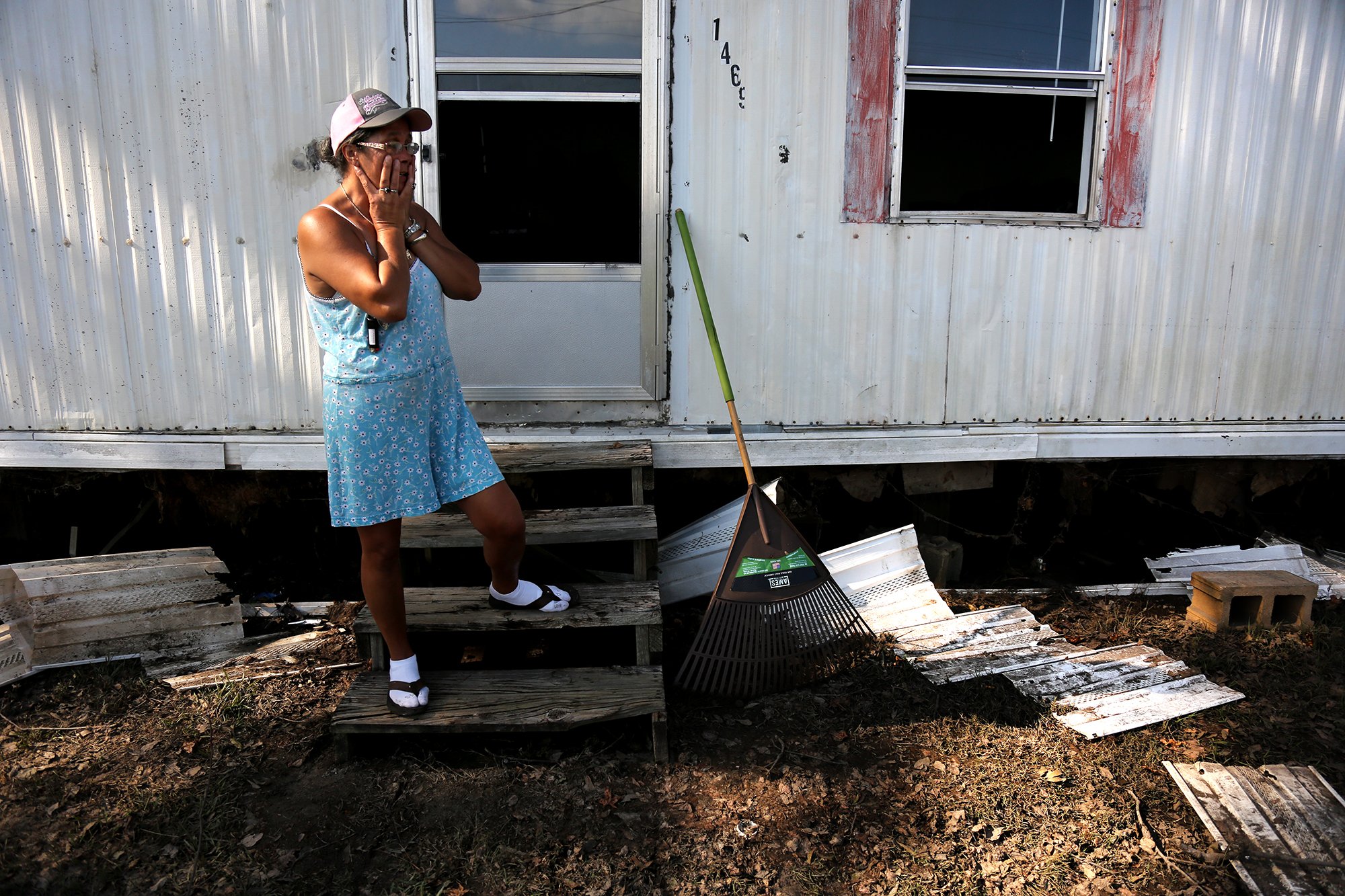
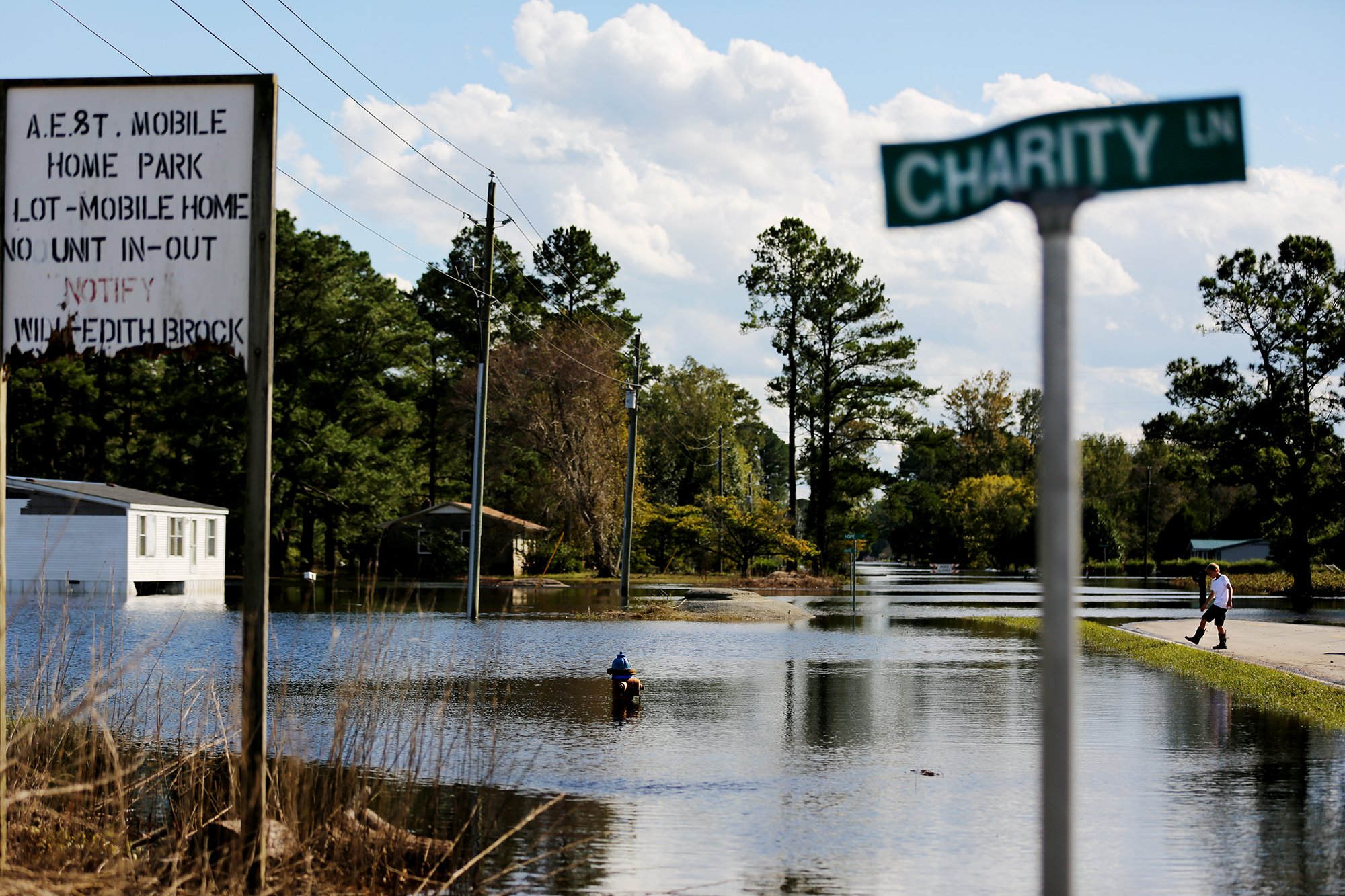
'Matthew Part 2'
With record rainfall expected from Hurricane Florence, Odell Wilkins hammered a section of white PVC pipe into his front yard, just about knee high. That way, he could keep an eye on the encroaching Lumber River throughout the night without having to leave the mobile home he shared with his wife, Angela.
"I sat up all night," he said. "At about 4:30, that's when I woke my wife."
Before they plunged into the rushing water and escaped, he had to kill three water moccasins seeking refuge on their porch, just outside their door. It was dark and the water was chest-high.
For residents of low-lying areas like this one outside Lumberton, Florence was something residents hadn't imagined. Especially so soon after Matthew.
"For sure, there's people worse off than we are," Wilkins said. "I don't want anybody feeling sorry for me."
"This is a poverty-stricken area," his wife acknowledged.
"This is Matthew Part 2," said Patrick McKenna, who managed one of the American Red Cross shelters in Lumberton. "Now their situation is worse."
Across the eastern third of North Carolina, residents were left in disbelief. Here we go again.
Katina Hunt and her common-law husband, John Locklear, lost their West Lumberton home in Matthew's flooding.
Talking about it moved her to tears.
"That was my life over there, and it ain't been the same since," she said. "I ain't got nowhere to call my home no more."
Hunt and Locklear didn't settle down until this summer, when they found an old trailer to rent at the edge of a swamp several miles outside Lumberton.
"I was helping the man work (on it) and got a halfway decent price on the rent," Locklear said.
The trailer is close to the Lumber River, but it sits on a patch of high ground and didn't flood during Florence. It wasn't spared, however.
Tree limbs tore open its roof and broke windows, exposing their belongings to the heavy rains and wind.
The couple, both members of the Lumbee Indian tribe, received several months rent after Matthew, and they recall two aid checks worth about $1,500, along with some coupons for mattresses and furniture. Now, Locklear is back on the road of red tape, making the rounds of various agencies on foot or bicycle because they do not own a car.
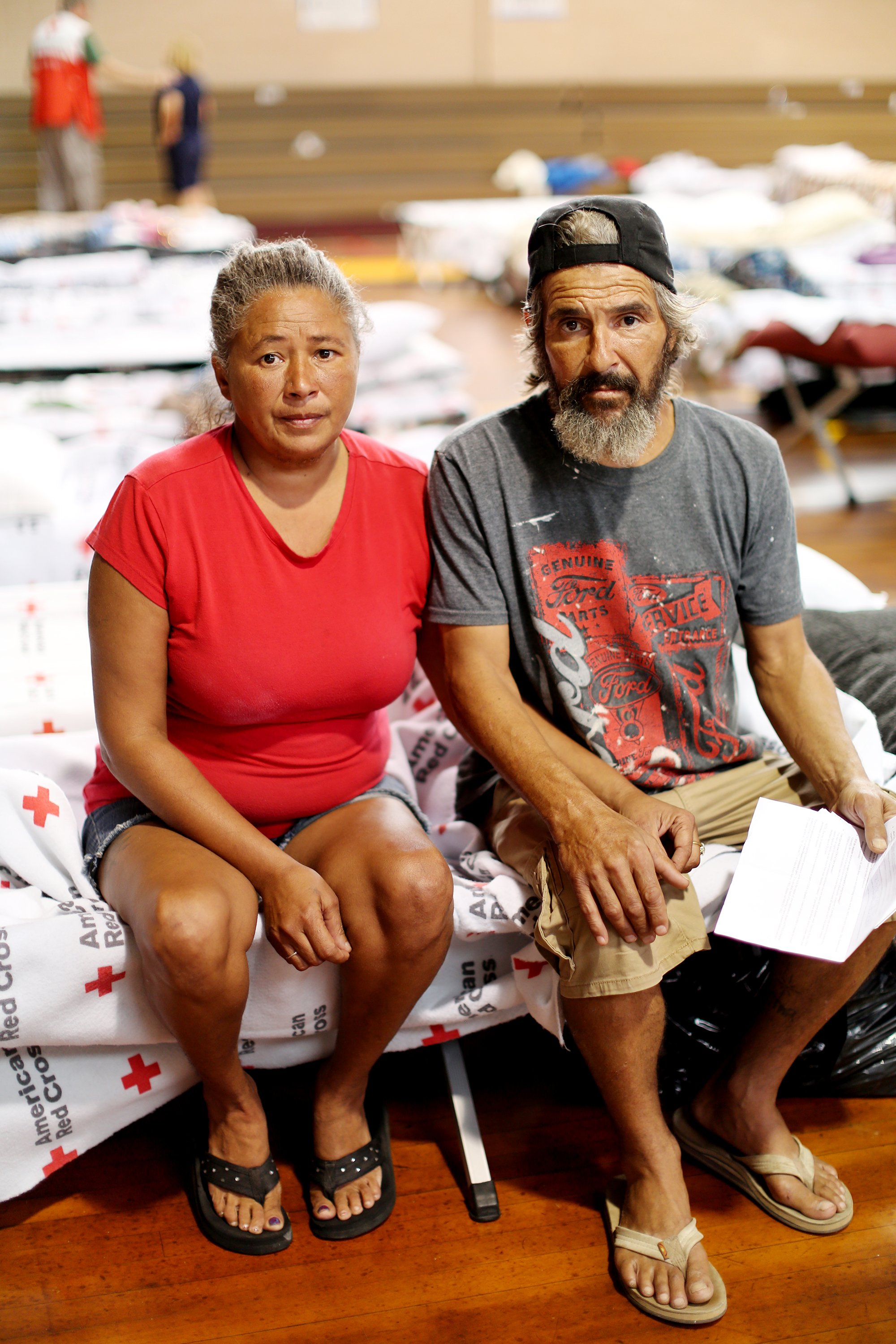
Linda Lowery is another West Lumberton resident facing a repeat of Matthew.
"We didn't expect this again," she said. She moved her family after Matthew, but only to another house in the same neighborhood. The man who had rented it before her, John Blackburn, left Lumberton last year. Her home was spared this time, but she worries what the next storm will bring.
That's what convinced Blackburn to move.
Blackburn, 52, said he loved the neighborhood but lost nearly everything in the 2016 flood, including possessions he'd bought with his share of a class-action court settlement tied to a pain medication that was proven to cause heart attacks.
"It was devastating having to go in and having to literally throw your whole life away," he said.
He heeded his mother's prediction that Matthew's flooding wouldn't be the last. He now lives just outside Fayetteville.
"It was very devastating mentally and emotionally," Blackburn said. "Thank the Lord I listened to Momma and I didn't go back."
In Whiteville, the seat of Columbus County, business owners faced the prospect of starting over in a low-lying business district built upon swampland.
"This can't happen over and over again," said City Councilman Timothy Collier.
But it has. If Ronnie Faulk, 60, were a commercial tenant in the building he owns, he'd have moved by now. Instead, he was replacing the lower half of interior walls with sections of corrugated metal roofing.
"No more sheet rock," he said.
In Fair Bluff, Mayor Billy Hammond said the town had identified 111 homes damaged by Matthew's flooding. FEMA had approved 71 of them to be elevated, relocated or demolished. Work on them had been imminent.
"That process was supposed to start this past Friday," Hammond said during a break from moving records back into the town hall on Sept. 24.
"We had to put it off due to the storm."
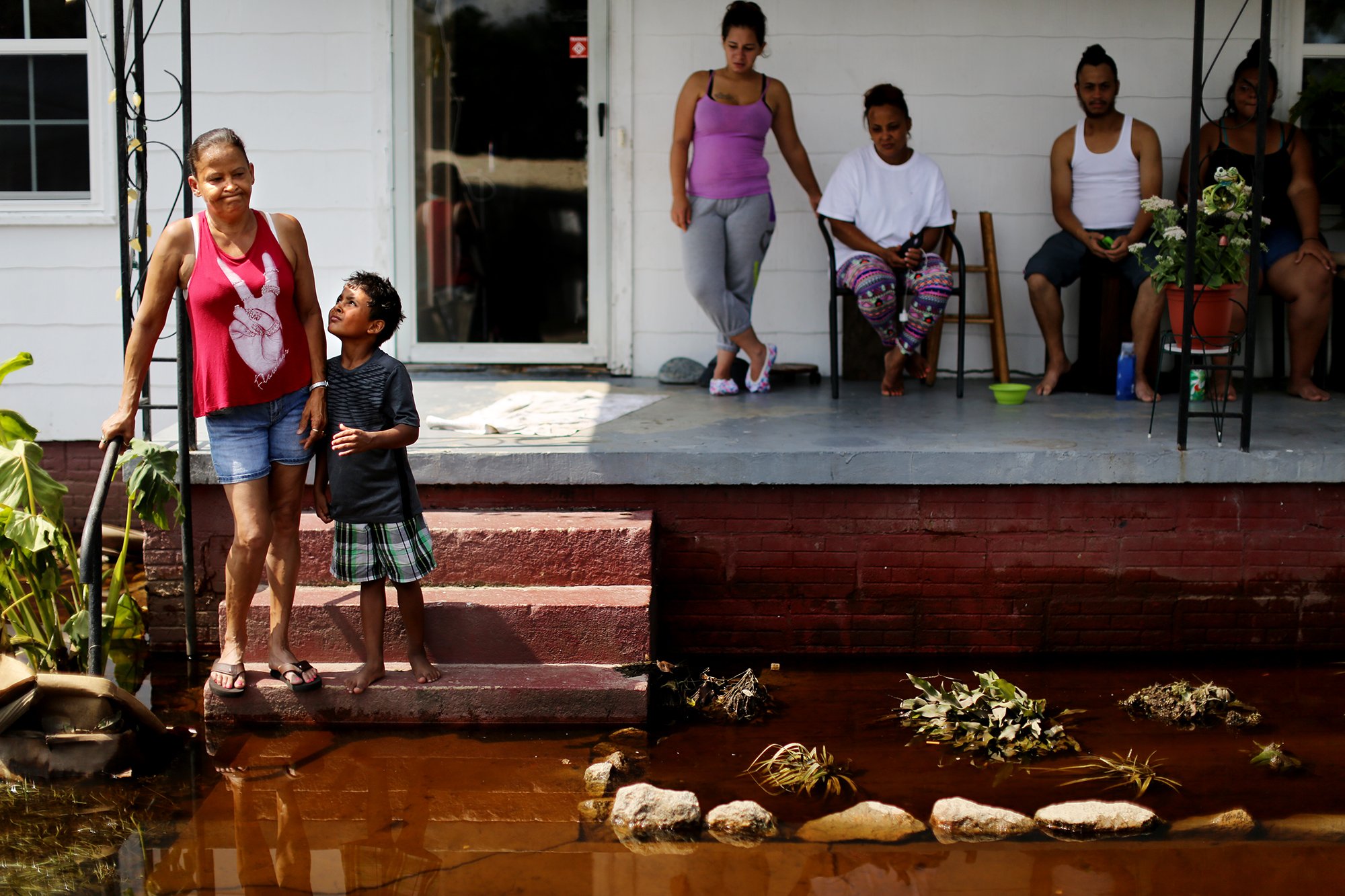
Dwindling towns hardest hit
Experts caution that the death of a town is complicated and hard to pin on any one event, even one as catastrophic as a hurricane.
Fair Bluff had 1,181 residents in 2000, according to U.S. census figures. By 2010, the population had fallen below 1,000.
Only three of the town's businesses — the post office, a Japanese restaurant and a property management company — reopened on Main Street after Matthew. All three flooded again during Florence.
"Matthew redrew flood plains in this town, most definitely, and I'm sure this one will, too," said Ken Elliott, an assistant chief with Fair Bluff Fire and Rescue.
"From a town of 900 prior to Matthew, we probably have 450 people," Elliott said.
After Matthew, there was debate whether Fair Bluff could survive, with its dwindling tax base and damaged infrastructure.
Hammond expects those conversations to resume.
"I do have concerns if people are going to come back," he said.
But wind and water aren't the only forces eating away at Fair Bluff. One of the biggest blows to the town's health was the collapse of the tobacco industry, Hammond said.
Even if Fair Bluff residents return after Florence, demographics show that many of them are older. While the median age in North Carolina is 38, the median age in Fair Bluff is 53. Heather Hunt, the UNC researcher, said that median age "took my breath away."
"At that point, half the town is retired and the prospect of keeping any young people there is, well, an uphill battle," she said.
Some of these towns have been shrinking for decades, said Jessica Stanford, a demographic analyst with the Carolina Population Center at the University of North Carolina at Chapel Hill. In the places that are just barely hanging on, she said, a hurricane "could very well be the last straw."
North Carolina's population overall has grown by 75 percent from 1980 to 2017, but towns like Fair Bluff aren't sharing in that growth. Rural communities can be isolated. They have fewer jobs, smaller tax bases and aging populations.
"All I can guess is that in 10, 20, 30 years, they're just not going to exist, or exist as only the barest little speck, because they can't sustain themselves," Hunt said.
And their proximity to water, once needed for transportation and agriculture, poses a sometime liability that communities like Kinston know all too well.
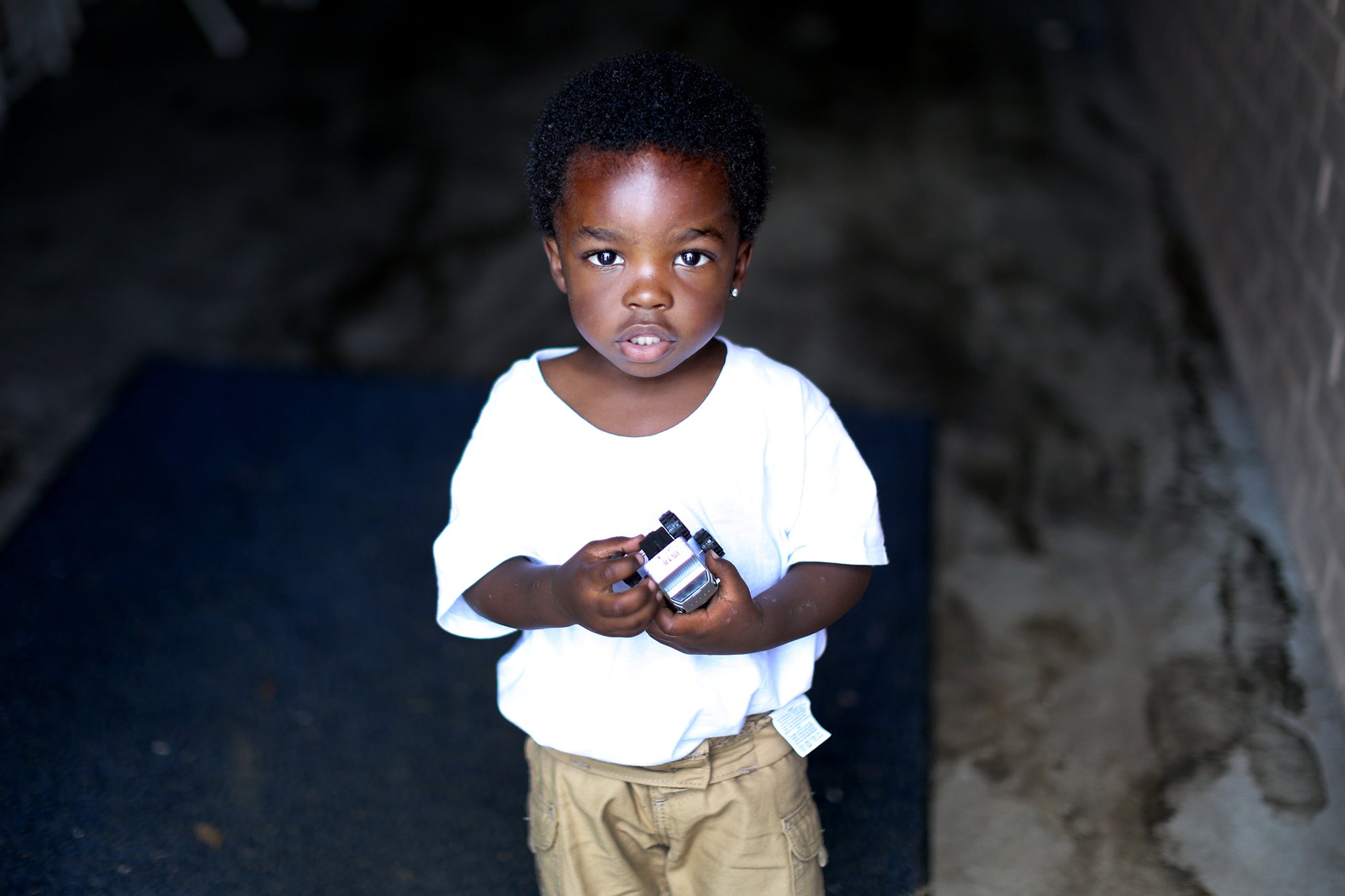
Outside of Lenoir County, the county seat of Kinston may be best known as a foodie destination that has grown up around local chef Vivian Howard and the PBS show about her acclaimed restaurant, "Chef & the Farmer." It also is known for producing professional basketball players from Cedric Maxwell to Brandon Ingram. Locals call Kinston "basketball heaven."
In Kinston is a neighborhood known as Lincoln City, and there may be no starker display of a hurricane's lasting impact on a community. The historically African-American neighborhood has been on the losing end of a turf dispute with the Neuse River that grew ugly with the arrival of Hurricane Floyd in 1999, when 3,500 homes were damaged or destroyed.
After Floyd, there was a government push to buy up and demolish entire blocks of homes in this part of Lincoln City. Nearly 20 years later, deer now walk the streets. Driveways, crumbling in disrepair, lead to nowhere.
Antoinette Croom, 51, resides on Lincoln Street, one of the closest streets to the river that is still occupied. She hopes she won't be there much longer. In the summer, she signed up for a program to sell her house.
"I'm tired of this going in and out, in and out," she said. "Living out of cars, it's just not me."
Michelle Anderson's home backs up to the empty grid of city streets. Her mother, Catherine W. Anderson, 94, recalled the Lincoln City of 60 years ago as tightly knit and full of life.
"From here back," she said, gesturing toward the river, "it was a Negro neighborhood. It was just as nice a place as you'd want to live."
With more than 20,000 residents, Kinston is not at risk of vanishing. But it has lost 19 percent of its population from 1980 through last year, Hunt said. From 1990 to 2000, the decade that brackets Floyd, the city dropped from 25,295 residents to 23,688. It's not clear how many of them had lived in Lincoln Village.
"But there's still some people here, and they'll be living here," Michelle Anderson said.
Added her mother, "Because they have no other place to go."
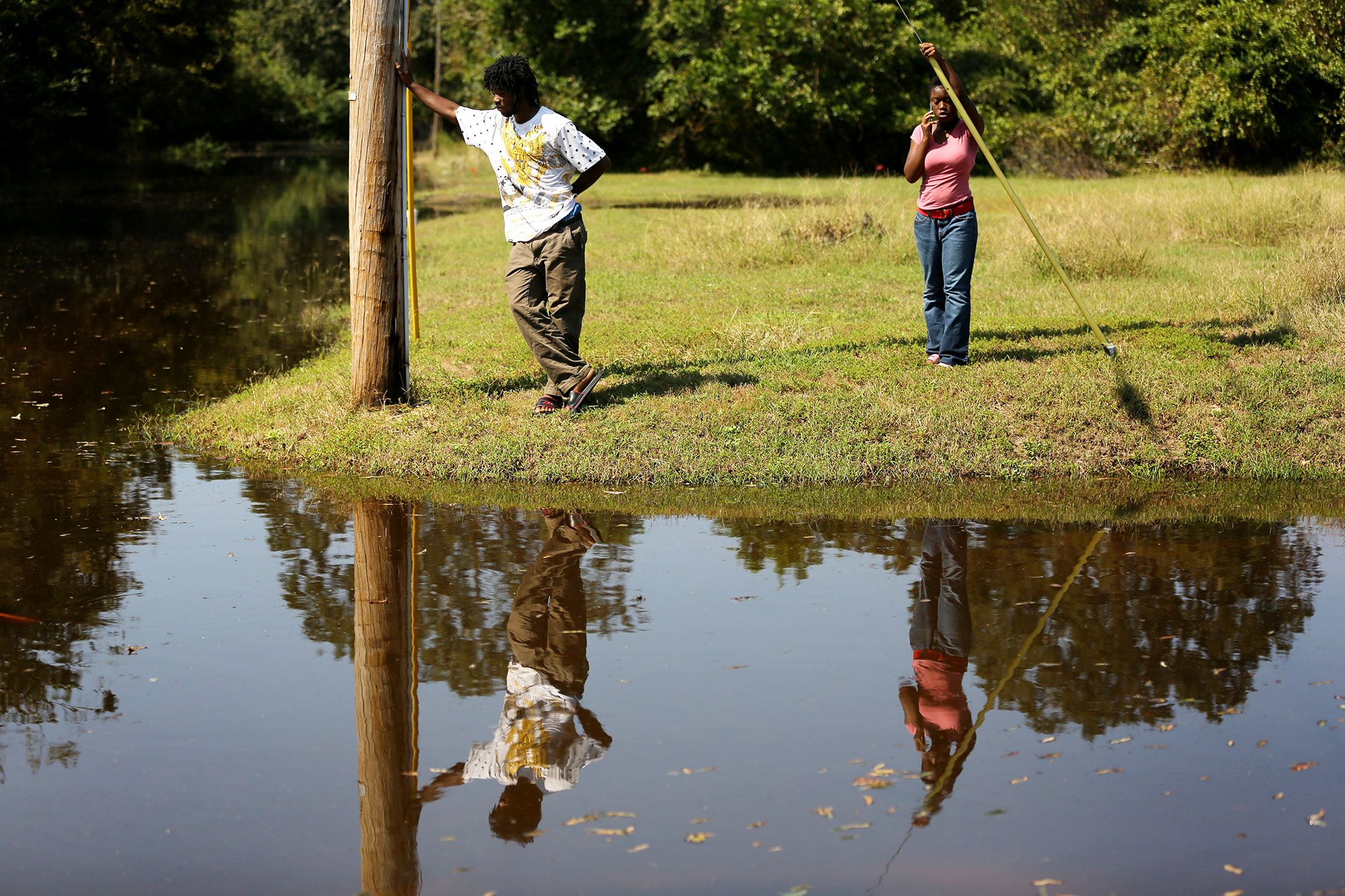
Not all residents can flee
That statement is not often discussed but a reality nonetheless.
In the publicity blitz before a hurricane, the standard admonition can be counted upon:
Do not ride this one out. Leave now. This storm must be taken seriously.
This warning ignores the fact that there are plenty of residents who would love to flee but due to various circumstances cannot. They are in communities such as Lumberton, where the poverty rate in 2016 was 35 percent, more than double the state rate of 17 percent.
In an article published last summer in the journal Scientific American, the authors reported extensive research that backed up the idea "that the rich may have the resources to move away from areas facing natural disasters, leaving behind a population that is disproportionately poor."
Gloria Dove, 60, didn't want to ride out Florence in her flooded West Lumberton neighborhood or the crowded shelter where she ended up. But her resources are limited and she cares for her mother, who has dementia.
"I wish I could pick up my house and move it to that side of town," she said.
Historically, it was often by design that poorer citizens and minority groups such as African-Americans and the Lumbee tribe settled in the less-desirable parts of town.
"Black residents of these towns had no choice but to live in the areas that were flood plains or right close to the river, because that's what they could afford, or that's where they were allowed to live, so that's where they are now," said Hunt at UNC.
Katina Hunt and John Locklear have no car and meager prospects. Locklear, who fell from a roof during a construction job and has the surgical scars to prove it, is on disability. Counting their on-hand cash at the shelter, Locklear announced their total: "Zero dollars and 87 cents."
But residents of these hard-hit towns say they shouldn't be counted out. Even now, Locklear speaks fondly about Robeson County and the Lumber River, where he and other Lumbee swam as children.
"There is an amazing amount of resilience here," said Les High, publisher of the local newspaper that covers Whiteville and Fair Bluff.
That resilience was evident on three gravel lanes named Faith, Hope and Charity. All are in the A.E.&T. Mobile Home Park just outside the Jones County seat of Trenton, where about 300 residents endured record flooding from the Trent River.
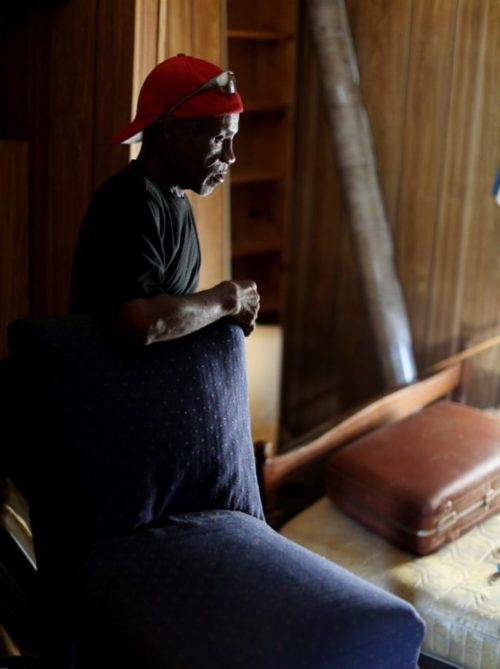
This time, the water reached the kitchen countertops in Raymond Tucker's trailer.
For 30 years, Tucker worked at Warmack Lumber Co. in nearby Cove City. Now 62, he relies on $773 a month in Social Security. He remained in his waterlogged and moldering mobile home, which he rents for $250 a month. The smell was nauseating, even though he kept the doors open to air out the place.
"Nobody will help me," he said. It did not sound like a complaint, but an expectation based on life experience. He was on his own. He mentioned an upcoming doctor's appointment.
"I found out I got some kind of cancer," he said. He searched for the word the doctors had used. "Pancre... cancer?"
"He shouldn't even be in there, but he's not going to go nowhere," said one of his neighbors, Lola Jordan. "Where can he go?"
Jordan, 59, and her husband still owe $6,000 on their mobile home. The flood buckled their floors but did not intrude on the living space.
They were fortunate that her husband already had returned to his maintenance job with a local school district. She had gone eight days without her heart medicine but said they were better off than others, like Tucker and another neighbor who cared for two sons with special needs and a husband with Parkinson's disease.
Jordan understood why Tucker predicted he would go it alone. In the week after Florence, the only outside entity to check on the park's residents had been a church group from Charlotte, she said.
She agreed with Tucker. They were on their own, she said, and she did not know if that would be enough.
"I don't even know if it's going to be a community anymore."
